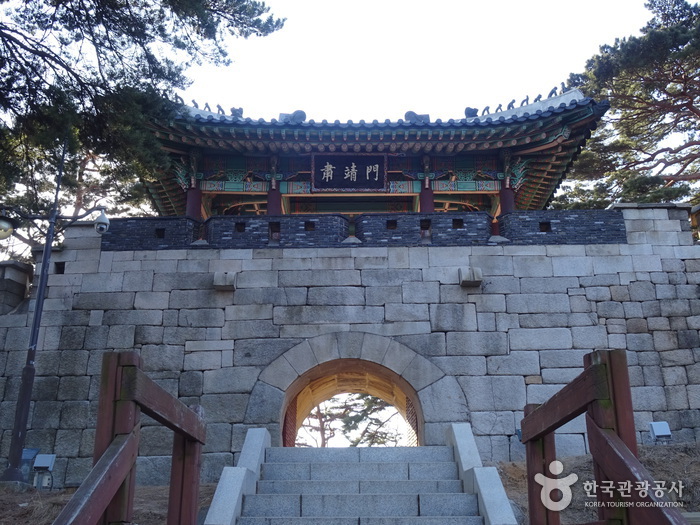Amsa-dong Prehistoric Site Museum (암사동선사유적박물관)
9.2Km 2023-12-22
875 Olympic-ro, Gangdong-gu, Seoul
The archaeological sites in Amsa-dong, Seoul, were a collective settlement where people lived during the Neolithic Age about 6,000 years ago and became known to the world after the sand dunes along the Hangang River caved in during the great flood of 1925, exposing numerous pieces of comb-patterned pottery. The area designated as a historic site in 1979, and excavation of the site took place from 1981 to 1988. The cultural heritage protection area was expanded to a total area of 78,133㎡. Currently, nine Neolithic dugout huts and one experiential dugout hut have been restored. The exhibitions currently open to the public are Exhibition Hall 1, which displays a restoration of a Neolithic Age dugout, and Exhibition Hall 2, which displays various panels and models to help understand the prehistoric era as a whole.
Sukjeongmun Gate (북악산 숙정문)
9.2Km 2020-06-19
1, Daesagwan-ro, Seongbuk-gu, Seoul
+82-2-747-2152
Of the Four Great Gates (Sukjeongmun, Namdaemun, Dongdaemun, and Seodaemun), established by King Taejo in 1396, Sukjeongmun is called the north gate.
Located to the north of Seoul, this gate, with Gyeongbokgung Palace in the center and Changaemun (Jahamun) to the right, make up the wings of the north gate. Due to the possible danger of the area being damaged from all the pedestrians, the king in 1413 planted pine trees and prohibited passing this area. Henceforth, Sukjeongmun became a scenic walkway until the North Korean Communist infiltration of 1968, which prohibited the passing of all civilians.
The reopening of Sukjeongmun in April of 2006 has led to the opening of Bugaksan Mountain in April of 2007 and is in the process of dividing it into 3 courses. Bugaksan Mountain has been kept well-preserved due to a long period of restriction in this area, and if you climb the mountain, you will be able to see all of Seoul.
Hyundai Department Store - Mia Branch [Tax Refund Shop] (현대백화점 미아)
9.2Km 2024-04-23
315, Dongsomun-ro, Seongbuk-gu, Seoul
-
Galaxy Lifestyle - Hyundai Mia Branch [Tax Refund Shop] (갤럭시라이프스타일 현대 미아점)
9.2Km 2024-04-16
315, Dongsomun-ro, Seongbuk-gu, Seoul
-
Stonehenge - Hyundai Mia Branch [Tax Refund Shop] (스톤헨지 현대 미아점)
9.2Km 2024-04-18
315, Dongsomun-ro, Seongbuk-gu, Seoul
-


![Hyundai Department Store - Mia Branch [Tax Refund Shop] (현대백화점 미아)](http://tong.visitkorea.or.kr/cms/resource/89/2888589_image2_1.jpg)
![Ping [Tax Refund Shop] (핑)](http://tong.visitkorea.or.kr/cms/resource/00/3314300_image2_1.jpg)
![PXG [Tax Refund Shop] (PXG)](http://tong.visitkorea.or.kr/cms/resource/58/3313058_image2_1.jpg)
![St ANDREWS [Tax Refund Shop] (세인트앤드류스)](http://tong.visitkorea.or.kr/cms/resource/07/3313407_image2_1.jpg)
![Adidas [Tax Refund Shop] (아디다스)](http://tong.visitkorea.or.kr/cms/resource/88/3313488_image2_1.jpg)
![Mizuno [Tax Refund Shop] (미즈노)](http://tong.visitkorea.or.kr/cms/resource/43/3314043_image2_1.jpg)
 English
English
 한국어
한국어 日本語
日本語 中文(简体)
中文(简体) Deutsch
Deutsch Français
Français Español
Español Русский
Русский